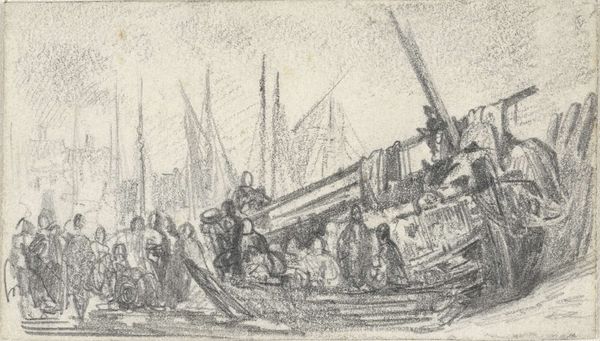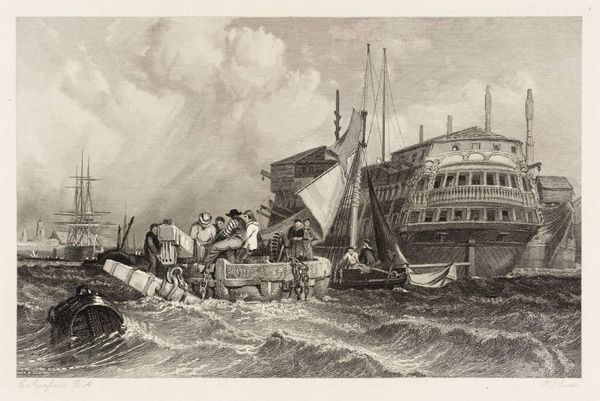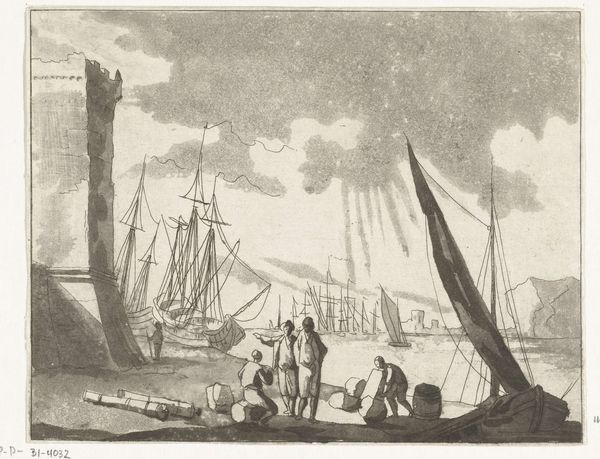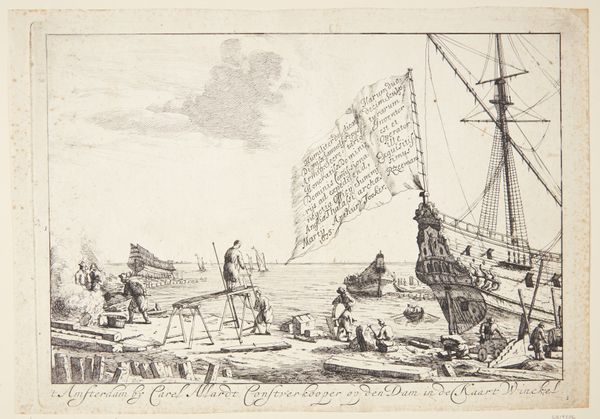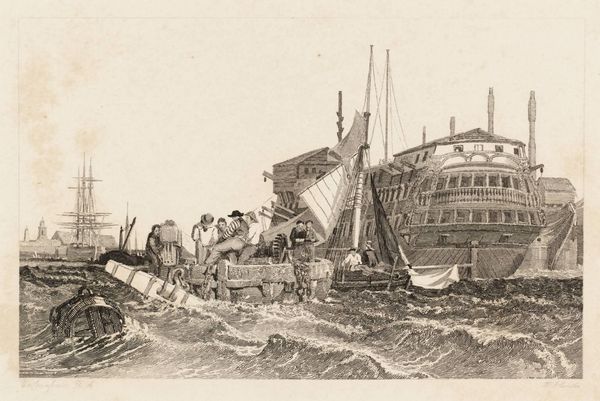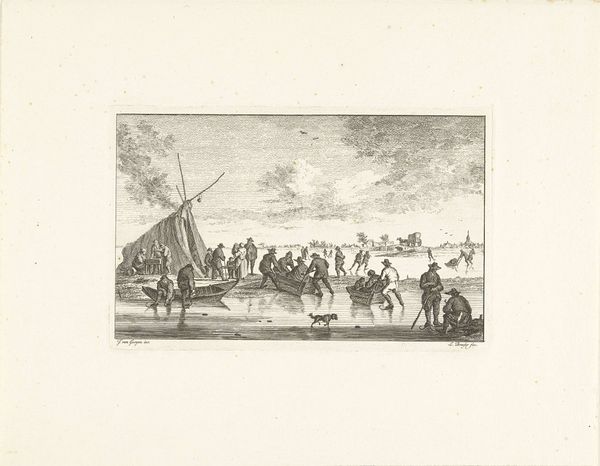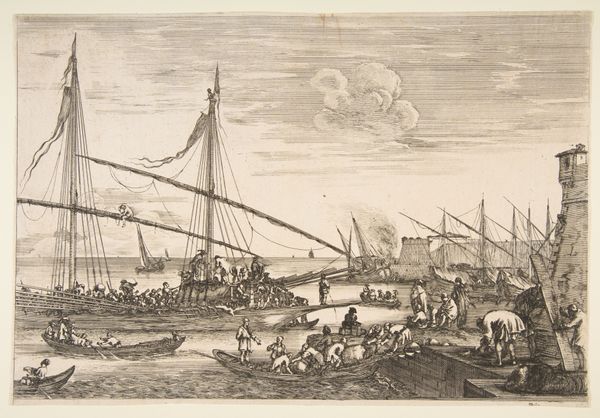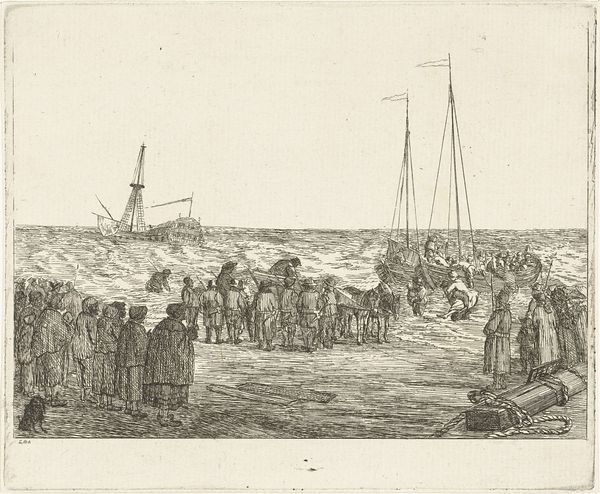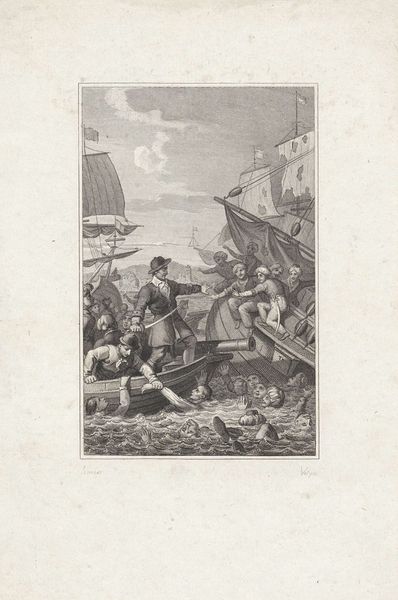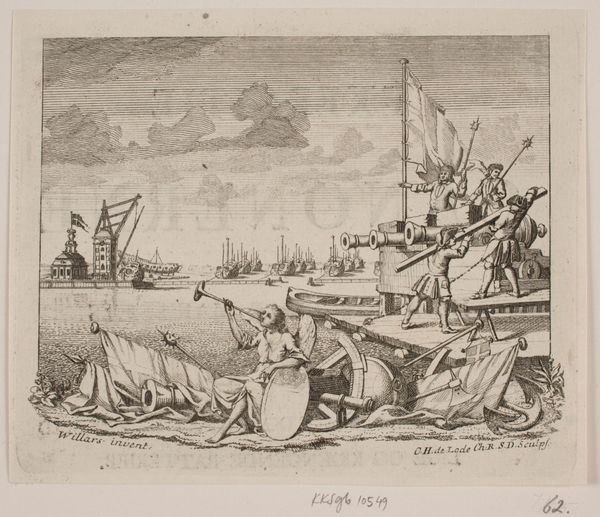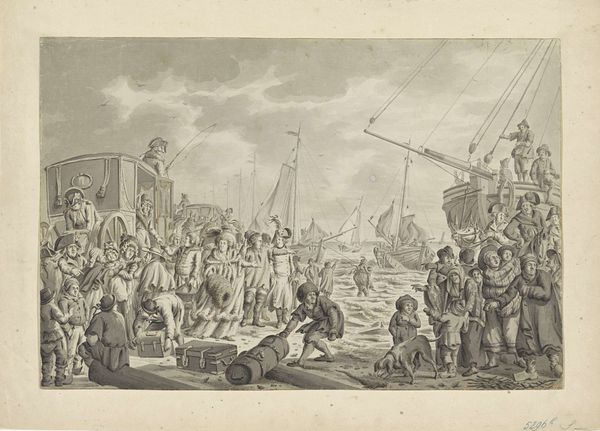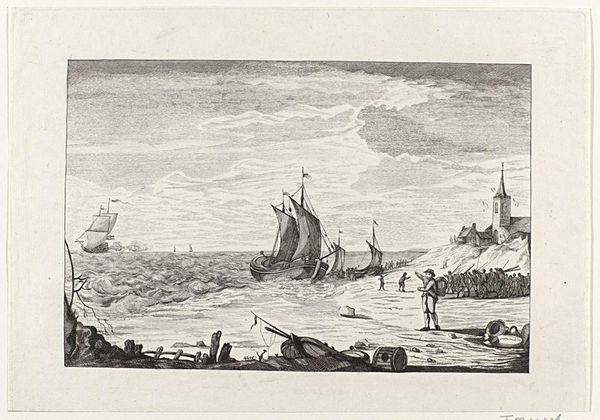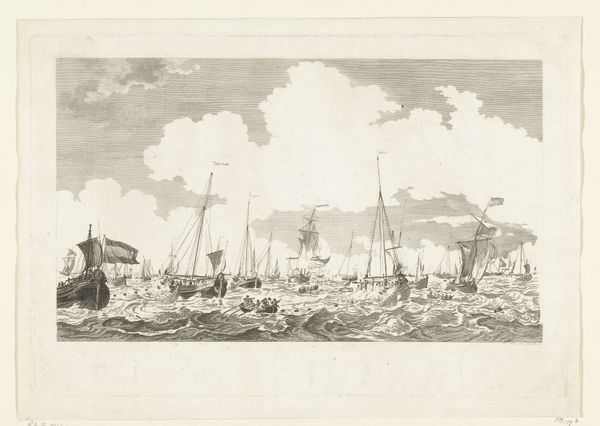
print, engraving
#
neoclacissism
# print
#
landscape
#
history-painting
#
engraving
#
realism
Dimensions: height 337 mm, width 405 mm
Copyright: Rijks Museum: Open Domain
Editor: This engraving by Reinier Vinkeles, created in 1813, is titled "Aankomst van koning Willem I te Scheveningen, 1813" and it captures a historical event. The detail is quite amazing and gives the whole piece a very grand and celebratory feeling. How do you interpret the significance of this work in its historical context? Curator: Considering the historical backdrop, this print immortalizes a pivotal moment: the return of Willem I, signaling the end of French rule and the birth of the Kingdom of the Netherlands. Its creation speaks volumes about the period's yearning for national identity, effectively using art as propaganda. Note how the artist employs neoclassical ideals to present Willem as a triumphant hero. Does this idealized representation influence our understanding of the event? Editor: Absolutely. By framing Willem as a hero, the artwork certainly promotes a specific narrative and fosters national pride. Curator: Exactly! It makes one consider how the rise of museums and public art galleries at the time allowed artworks like this to shape and mold the collective memory of a nation in its crucial development. Furthermore, reflect on the effect an easily reproducible medium such as the print has had on circulating this narrative. Editor: That's fascinating. It's like a visual anchor for a new national story, widely accessible through prints! Thank you; I didn't initially appreciate the depth of its role in constructing national identity. Curator: And hopefully you’ve come to understand that historical context shapes not only the art itself, but also its subsequent impact. It is a potent combination of the aesthetic, political and social influences of the time.
Comments
No comments
Be the first to comment and join the conversation on the ultimate creative platform.
